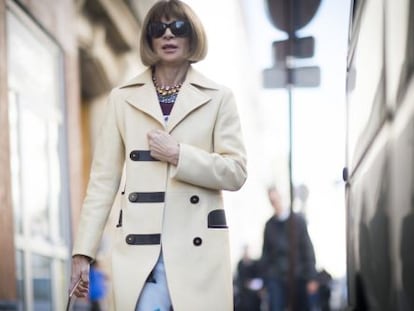Carolina Herrera, the Empress of Manhattan
The head of a billion-dollar global fashion empire came to design by chance when she was 42

She came to design by chance when she was 42, a mother of four and a restless member of the bourgeoisie with exquisite taste. Today she is a billion-dollar global brand and the epitome of American chic. A friend of Andy Warhol and Jackie Kennedy Onassis, this is the story of her triumphant foray into the cut-throat world of fashion.
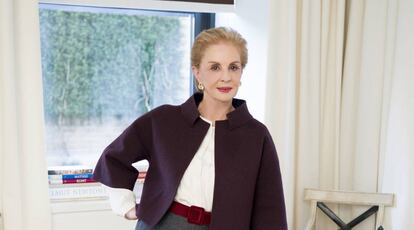
I stumble upon the great lady in her studio on Seventh Avenue, silhouetted by the midday sun that pours through the windows. She is so petite, poised and untouchable, she could be a dance mistress. Her hair is worn short, her head is held high and her bare masculine hands rest on her hips. Her clothes are neat and minimalist and she wears them with an almost military precision, but there is a refined grace to the way she walks across the room on her vertiginous 8cm heels. She moves as though she is entering a cool restaurant in uptown New York. It is said in the fashion world that nobody makes an entrance quite like her.
Her voice is deep, authoritative and somewhat theatrical, and still has traces of an accent that betrays her Venezuelan roots. Then there’s her sense of humor, which is as sophisticated and irreverent as her evening gowns. “But don’t get me wrong,” she says. “It’s always in good taste.” She could be a character from an F. Scott Fitzgerald novel. A sane version of Fitzgerald’s wife, the much maligned Zelda. She has black Latin eyes and a youthful complexion. Her only concession to frivolity is a racy red lipstick, not unlike the one in the portrait Andy Warhol painted of her, which now dominates her showroom. Other features include a fabulous wrap-around terrace with pebbles and boxwood, art books on old friends, including Salvador Dalí, Diana Vreeland and Gore Vidal, and an eye-catching collection of photographs.
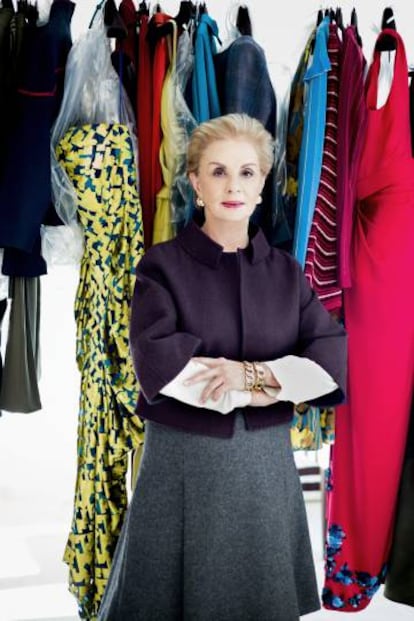
Among them is a black-and-white one of Mick Jagger and the late Lord Glenconner on Mustique, the Caribbean bolt-hole for the rich and famous, taken by Robert Mapplethorpe who became a friend when Herrera visited the island as a guest of Princess Margaret. “Bob Mapplethorpe was good-looking, charming and very polite,” she says. “We met on a private flight and hit it off. He was very talented and cutting edge. He asked me to pose for him and since he was poor and had no assistant, my husband helped him with the lights. He died very young. Like Halston [the great American designer] and Steve Rubell [the owner of Studio 54, the club of choice for the wildest and choicest of Manhattan]. The 1980s were both beautiful and terrible.”
When asked how she got on with people who were obviously so different to herself, the designer replies, “We were great friends. And then each of us went our separate ways. It would be very boring if all your friends were the same. What I can’t stand is envy and gossip. I hate it and I hate it. Everyone should be able to live as they please.”
Carolina Herrera is not an easy subject to interview, and not just because of her hectic schedule. There’s also her legendary impatience. She finds it hard to concentrate. She loses sight of her cell phone, remembers and then forgets anecdotes, jumps from her childhood to her later years, and hates to enter into personal detail. She’s elusive – a timid person who has been catapulted onto center stage without knowing how or why.
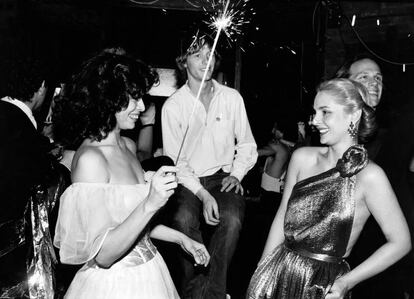
“I’m an ordinary person who plays with her grandchildren and takes brisk walks in Central Park to speed up her heart rate,” she says. “I don’t spend my days on a plane or at a party, nor do I always wear white blouses, and I never drink champagne. I prefer tequila. At home I’m a very bad cook who doesn’t even know how to boil water. I was brought up to be the lady of the house, tell the servants what to do and have a large number of children…”
She’s the last of a dying breed – charming once you get through the icy high society exterior. And though she concedes she might be a hard person at times, she claims never to raise her voice. “It’s more that I don’t give up,” she explains. “Fashion is an egotistical world and you have to stand your ground. Otherwise you’ll be eaten alive. But I have never shouted. I treat the company as though it were my family. And you get more out of your employees if you tell them, ‘Don’t worry. We’ll do it together’ than if you humiliate them. That said, I always have the last word. Every garment that leaves here has to have my approval. I make fashion that pleases me and makes women look feminine, sophisticated, elegant, refined and glamorous. I don’t work in the fashion industry, I work in the beauty industry. Chanel said that fashion passes and style remains. There are fashion houses that are only concerned with doing something new every season. And my question is: where are we going with that and what purpose does it serve?”
Their answer is to help women to look younger, but Herrera is far from convinced. “They don’t realize that trying to look younger is the first sign of aging,” she says. “What you wear should suit your age. The first beauty accessory a woman should have is a full-length mirror so she can see what she looks good in. I know what suits me. And I’d rather look old than ridiculous.”
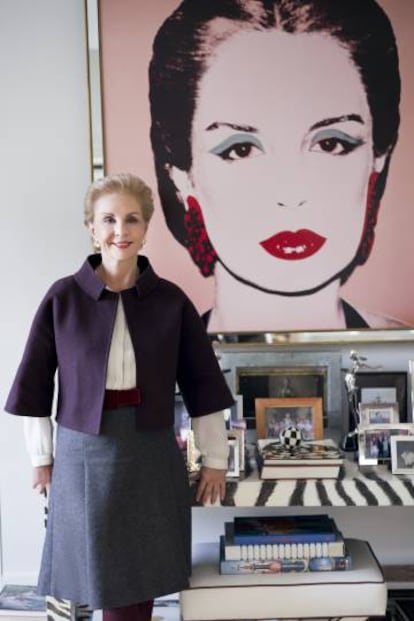
Herrera’s objective is to turn out beautiful, self-confident women. “I don’t believe anyone wants to be admired because they are dressed like a half-naked clown,” she says. “The women I dress want to be admired for being beautiful, not an eyesore.”
According to Herrera, a number of designers dress women with the sole purpose of attracting attention in the media and on the all-powerful social networks. “Some designers think you have to do something crazy, whether it looks good or not,” she says. “And they’re just humiliating women for their own ends.”
She walks around the studio with her chin held high and a severe expression on her face, as though she were inspecting her team of languid teenage models before they show off her Pre-Fall 2017 collection to distinguished critics and buyers. She smoothes out the panel of one garment, checks out a hemline, studies the fall of an evening gown made from velvet as light and fluid as silk.
Made on the 16th floor, one floor down from this studio, her designs are not only easy to wear, they are timeless. This season’s colors were inspired by the palette of Polish art deco painter Tamara de Lempicka. “In this fashion house, each garment has to be well finished,” she says. “It has to be impeccable outside and in. That is our trademark. I learned that from my mother and my mother-in-law, who were dressed by Dior, Balenciaga and Lanvin.”
Some hours later, I am checking the truth of this claim in her boutique on Madison Avenue, on the corner of 75th Street – a spot previously occupied by Givenchy. And as I sort through the clothes racks of prêt-à-porter designs with price tags ranging from €2,000 to €10,000, I have to hand it to her. They are finished with the utmost care and delicacy while being unmistakably ‘New York’.

On the whole, her clothes are elaborate wardrobe staples, aimed at active women with a view to boosting their morale. It’s all about comfort and easy glamour as well as knowing how to accessorize. The peculiarly American style has been espoused by other designers of her generation such as Calvin Klein and Donna Karan and by the next generation too – think Marc Jacobs, Vera Wang and Tom Ford – but there is a signature sophistication to her garments that is unique.
Now 78, Carolina Herrera is the most famous designer on the planet, perhaps because her clothes are red carpet favorites, and as a former style icon herself, she really knows her stuff. According to The New York Times, her brand is worth more than €1 billion – a figure she claims to be unaware of. Though still a family business, her empire consists of Carolina Herrera New York – only sold in the US, and a second trendier label CH, which has more than 150 boutiques around the world with men and women’s lines and accessories. There are also 30 boutiques selling her Carolina Herrera Bridal wear and finally, a range of fragrances, created and sold since 1988 by the Catalan firm Puig in 25,000 retail outlets across five continents.
Quite a stunt for someone who came to fashion by chance 35 years ago, having just turned 42. Carolina’s childhood was spent in Caracas among high-ranking military officials, wealthy landowners and oil magnates. She married at 18, but was unhappy and a scandalous divorce followed. Her second marriage was to Reinaldo Herrera – a cultured and seductive Venezuelan aristocrat and journalist who had had an affair with Aristotle Onassis’s first wife and socialized with the Rothschilds and the Agnellis, not to mention a number of royals. Together Carolina and Reinaldo had four children and then, from one day to the next it seemed, the woman who had been brought up to remain at home became a designer.
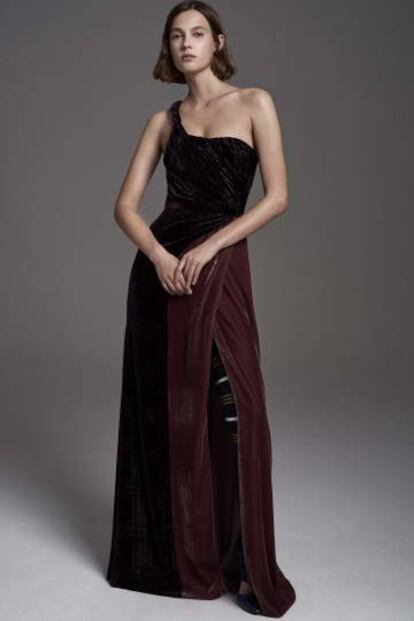
There was no formal instruction in cutting fabric or mixing color, only the instinct of a style icon. “I had an eye for it,” she says. “And in this business, that is more important than knowing how to sew on a button. I have the ideas and a team from the big fashion houses behind me. I tell them what I want; I tell them how I want the sleeves and the shoulders, the length of the skirt, the waist, the colors. You have to have a sense of proportion and color and cut. And you can’t learn that. You either have it or you don’t. Fashion is meant to be pleasing to the eye. And I know how to do that. I know what looks good. I’ve seen students coming out of the big fashion schools but they don’t amount to much because they’re too technical. They don’t have imagination. Fashion is a dream that has to be transformed into reality. There has to be room in life for fantasy.”
Carolina was not brought up to be in the spotlight, but she was too restless to stay home. “I was okay with that existence until I got to 42 and then I’d had enough,” she says. “The only time I had ever worked was as a PR for the couturier Emilio Pucci in Caracas for six months. But suddenly, I got the urge to do something in fashion. It was as if it had been lying dormant inside me and here in New York, doors opened for me and I was able to explore it. Americans are very generous people. If you have the talent, they open the doors for you.”
Many believed it was a passing phase, a whim born out of boredom. “That’s what they thought,” she explains. “They said I would tire of it. And here I am 35 years later. And it’s a 12-hour-a-day job. It’s extremely hard work. But I was encouraged by Diana Vreeland [the legendary editor of Harper’s Bazaar and Vogue]. She was my mentor. In 1980, I told her I wanted to do fabric prints and she said, ‘How boring! Don’t be silly. Why don’t you do a fashion collection?’ That’s when I got the bug. Luckily, my husband supported me. He said over and over again, ‘You can do it and you have to do it’. I was lucky with Reinaldo because if your partner gives you a hard time, you don’t get anywhere. You won’t get the thing off the ground.”
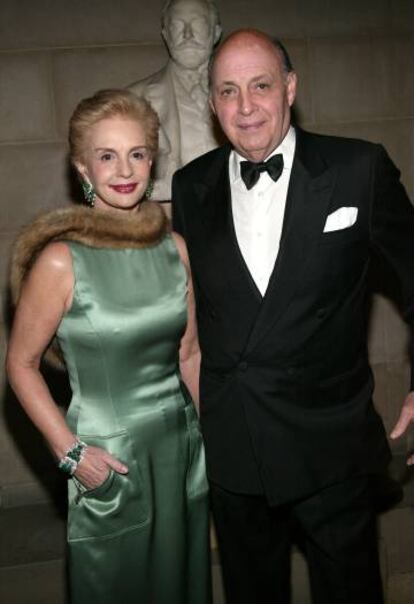
Her approach to breaking into the fashion industry was nothing if not business-like. Before showing her first collection in April 1981, at the Metropolitan Club, she had her company all set up. “ It was all very clear in my head and I did it 50/50 with my first partner Armando de Armas, who was a Venezuelan editor,” she says. “You have to have a base of production and distribution.”
Her first runway show was a high-profile event with Andy Warhol and Bianca Jagger sitting in the front row and David Bowie’s wife Iman on the catwalk. And despite poor reviews, it sold well. Soon it was on the racks of Neiman Marcus, Saks and Bergdorf Goodman and, most importantly, in the display window of Martha’s, the most sophisticated boutique on Park Avenue. A roster of distinguished clients followed, starting with her neighbor Jackie Onassis, whom Carolina would dress until her death in 1994. “I’m an American designer,” she explains. “I have always worked in the US. I love Caracas and I love Venezuela, but what can I do? I have always worked here.”
For 35 years she has proven it by dressing a melting pot of Hollywood stars with the best of her creations: Latinas such as Penélope Cruz, Wasps like Renée Zellweger or Taylor Swift, African-Americans like Lupita Nyong’o and Asian-born actresses such as Lucy Liu.
Herrera’s career got off to a flying start but it wasn’t until 1988 that she showed the extent of her business acumen by signing an agreement with Puig, the Spanish fashion and perfume giant, to promote her fragrance – after which she concocted 20 more. In 1995 she got a further vote of confidence from Puig when it purchased all the shares of Carolina Herrera New York, the engine of her entire business.
Herrera is not an easy subject to interview, and not just because of her hectic schedule
It was a smart move. Puig had the financial muscle to manufacture and distribute her work on a global scale, with the corresponding marketing and management techniques that would facilitate growth. In 2000, through a strategic partnership with the Domínguez brothers’ Catalonian textile company Lonia, the CH label came into being, selling luxury items at reasonable prices. And in 2010, the powerful Italian multinational De Rigo made a deal to manufacture Carolina Herrera eyeglasses, a very profitable line of business for fashion companies.
Perhaps because of her eclectic methods and pragmatism, Carolina Herrera holds the record for having dressed more First Ladies in the White House than any other designer in history. After Jackie Kennedy Onassis, others such as Nancy Reagan, Hillary Clinton, Laura Bush and Michelle Obama called in at her design studio on Seventh Avenue, with Michelle Obama bowing out of the White House in a Carolina Herrera dress that made the front cover of Vogue. Herrera likes to remain neutral when it concerns politics. She even dressed the first and second wives of America’s new president, Donald Trump – Ivana and Marla – and says that it would be a great honor to dress the new First Lady Melania Trump, something which two other designers, namely Tom Ford and Marc Jacobs, have refused to do.
Herrera gets out of her Mercedes outside the Lincoln Center on a wet night, dressed in a long black dress. The flash bulbs light up her pearl earrings. Hundreds of guests in formal dress battle one another to get to the champagne. There are actresses, It Girls, models, aristocrats and millionaires with Latin and Eastern European surnames. Carolina Herrera is about to receive the prestigious Women’s Leadership Award for her 35 years as the doyenne of US fashion. She looks smaller and her profile seems sharper than the previous day and, beneath the gracious veneer, she is clearly nervous. “I wasn’t born to be a public figure,” she whispers. “I was brought up to be private. I don’t like being the center of attention. But what can you do?”
Thirty-five years is a respectable amount of time to head an empire, but though Carolina’s shoulders are beginning to look too frail for the responsibility, she refuses to contemplate retirement, never mind talking about who will succeed her. After all, she is Carolina Herrera. “I’m not going to take a backseat,” she says firmly.
Accepting her award, she smiles at everyone and gives a brief thank-you speech that ends with a resounding “God Bless America!” And when it’s all over, she turns to me and asks, “Did you like it? I spoke very little because people get bored and I don’t want to ruin their evening, least of all before they’ve had their dinner.” And then she throws her head back and laughs. She is indeed the Empress of Manhattan.
English version by Heather Galloway.
Tu suscripción se está usando en otro dispositivo
¿Quieres añadir otro usuario a tu suscripción?
Si continúas leyendo en este dispositivo, no se podrá leer en el otro.
FlechaTu suscripción se está usando en otro dispositivo y solo puedes acceder a EL PAÍS desde un dispositivo a la vez.
Si quieres compartir tu cuenta, cambia tu suscripción a la modalidad Premium, así podrás añadir otro usuario. Cada uno accederá con su propia cuenta de email, lo que os permitirá personalizar vuestra experiencia en EL PAÍS.
¿Tienes una suscripción de empresa? Accede aquí para contratar más cuentas.
En el caso de no saber quién está usando tu cuenta, te recomendamos cambiar tu contraseña aquí.
Si decides continuar compartiendo tu cuenta, este mensaje se mostrará en tu dispositivo y en el de la otra persona que está usando tu cuenta de forma indefinida, afectando a tu experiencia de lectura. Puedes consultar aquí los términos y condiciones de la suscripción digital.
More information
Archived In
Últimas noticias
Most viewed
- Sinaloa Cartel war is taking its toll on Los Chapitos
- Oona Chaplin: ‘I told James Cameron that I was living in a treehouse and starting a permaculture project with a friend’
- Reinhard Genzel, Nobel laureate in physics: ‘One-minute videos will never give you the truth’
- Why the price of coffee has skyrocketed: from Brazilian plantations to specialty coffee houses
- Silver prices are going crazy: This is what’s fueling the rally


